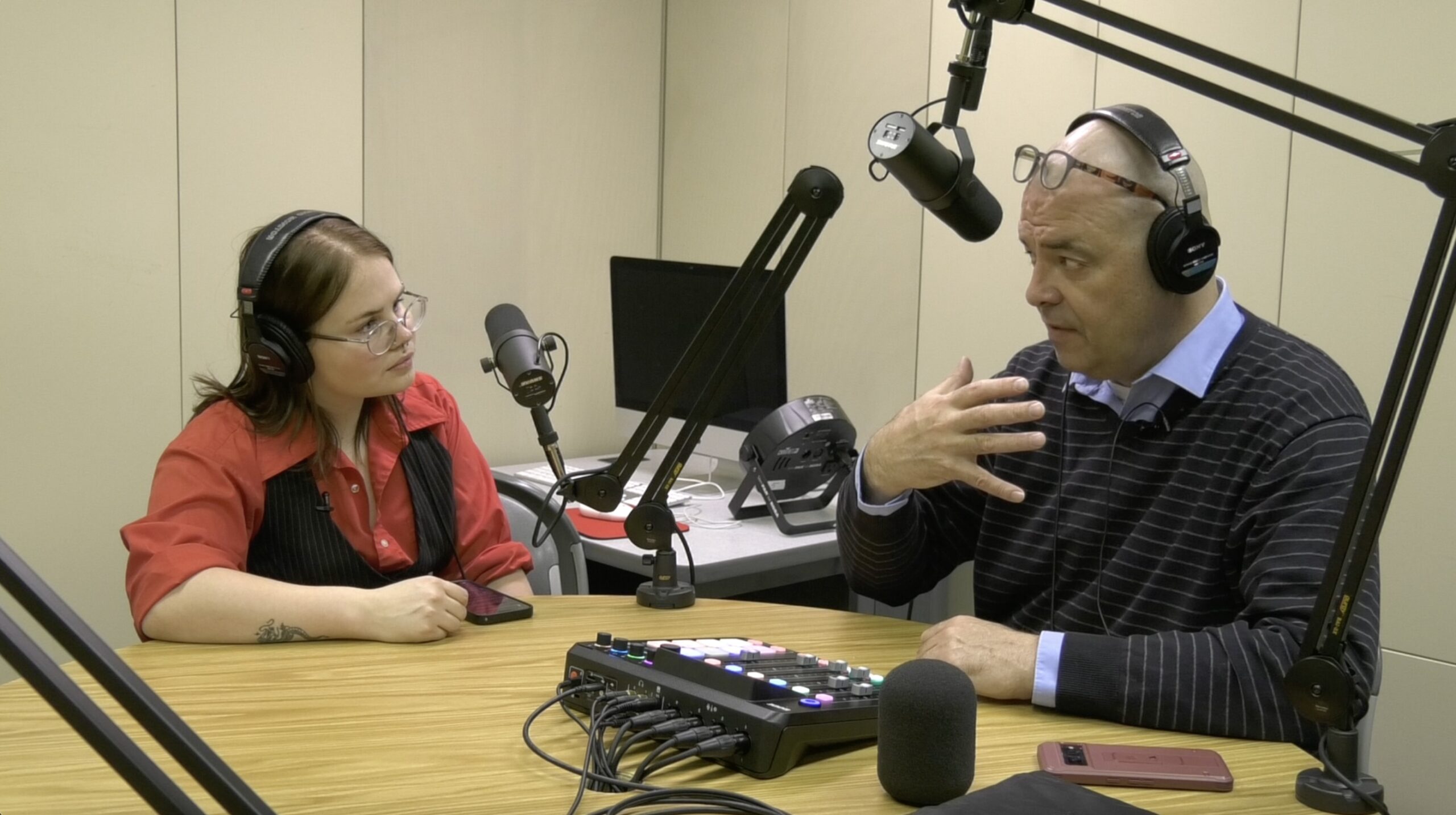By Sydney Fairbanks
Jambar Contributor
Students at Youngstown State University can get involved in various forms of media, including podcasting with the Communications Department.
Inside the audio lab on the second floor of Bliss Hall, YSU’s podcasting studio has two sound-proof rooms, each with all the equipment needed to produce a podcast.
Communications professor Adam Earnheardt said podcasting is a growing and popular form of content creation.
“It’s just another mechanism for students to practice their content creation or content creation skills. This one just happens to be a popular one right now,” Earnheardt said.
YSU’s podcasting studio uses a Rode RodeCaster Pro Audio Production Studios, Shure SM7B microphones and Sony headphones — all of which are industry standard and can be purchased for under $2,000.
According to Earnheardt, the RODE RODECaster allows users to program sound effects and music at the push of a button and connect to the system via Bluetooth. It also allows users to have participants call into a podcast.
“If I wanted to interview someone via Webex or Zoom, I can set up my computer, have them on the laptop in front of me, wire [the laptop] in, mess around with the levels, and bring them up on Zoom,” Earnheardt said. “With some of the audio quality on Webex and Zoom now, it’s so good it sounds like they’re in the same room with you.”
Earnheardt said the Communications Department used to have one podcast studio but added a second due to the growing demand.
“We wanted to do podcasting. It was just trying to find the right place to do it in. So, this was a natural fit. Plus, we started with one just to see how it would grow, and that got so big so quickly that we added the second space,” Earnheardt said.
Despite its recent popularity in the media, Earnheardt said podcasting is not a new platform.
“Podcasting has been around with us since the ’90s, but it really kind of exploded in popularity, especially with famous podcasts like ‘Serial’ and ‘S-Town,’” Earnheardt said.
On platforms like Spotify and Apple Music, users can listen to podcasts anywhere on topics from history to anecdotes on people’s lives. Earnheardt said many people have created podcasts because it’s easy to make and edit.
“This takes no time to edit,” Earnheardt said. “I was actually just working on one of these last night where I had like three minutes of content and it took me maybe five minutes to edit it down.”
Earnheardt said podcasting’s recent growth is likely due to how easy the equipment is to own and operate. Users can purchase equipment online and set up a studio in their home.
“Because of that, it makes it really accessible to people so that the people that do have a story to tell don’t have to be on video. You don’t have to have your own blog. You can do it this way and make it available to everybody,” Earnheardt said.
Earnheardt predicts podcasts will play a big role in the future of communication.
“Everybody’s gonna have one, right? We use this line, and it’s very accurate — that everybody has a story to tell,” Earnheardt said.
To access the podcast studio, students can sign up for a time slot in the audio lab.
